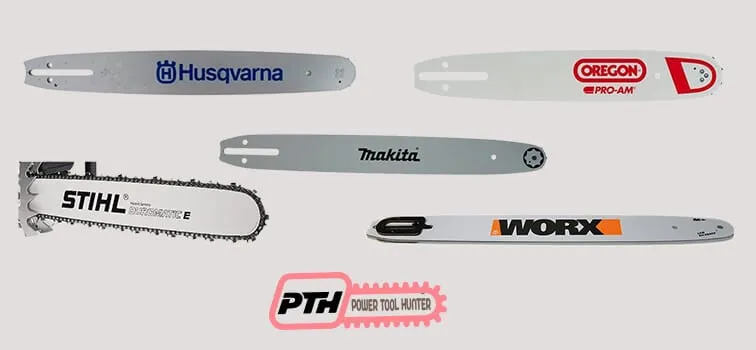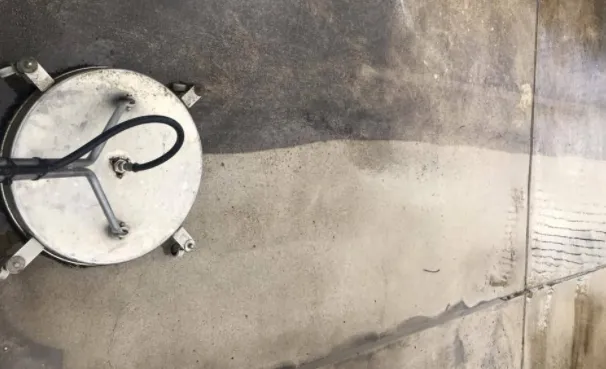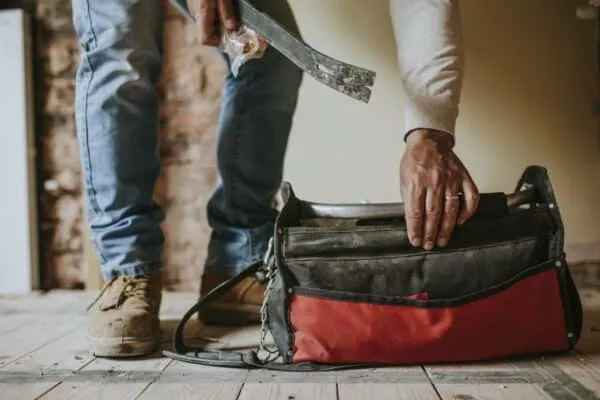In this article, we are going to provide you step by step procedure of how to measure a chainsaw blade. If you are looking for replacing your saw chain, then you need to know the length of both the blade and the chain of your chainsaw. When your chainsaw becomes dull and doesn’t perform well, you should replace your old chain with a new one.
Though chainsaw blade and chainsaw bar are two different terms, they are meant for one single part of the chainsaw, the saw bar. To get the exact blade length you have to learn how to measure a chainsaw blade.
Measuring the chainsaw blade is pretty simple and can be done in many ways. We will discuss the simplest ways to do this. Just read this article to know the step by step procedure.

Chainsaw blade measuring steps:
There are two established ways of measuring the chainsaw blade. You can either measure the effective length or the true length of the saw blade. Remember, these two ways provide the exact blade length but work differently. So, there might be some variations in their measuring process. To learn how to measure a chainsaw blade, you can adopt the one which suits you perfectly.
Blade Measuring by Effective Length
The actual length is always longer than the cutting length of the blade. Since the cutting length of the blade is the exposed portion of the blade, some portion of the blade remains covered inside the chainsaw body. That’s why the actual length and the cutting length can never be the same.
- First of all, to start measuring the chainsaw blade, turn Off the chainsaw if it is in the On position.
- Grab the cover portion of the spark plug and pull gently the wire from the spark plug to unplug it. This will prevent any accidental turning On of the saw.
- Lay down the chainsaw on the surface and take a standard tape measure. Now, measure the blade just where the blade is emerging from the casing of the saw.
- Take the measurement from the emerging point of the blade to the tip of the blade. By emerging point from the case, we meant the starting of the exposed portion of the blade.
- You will get fragment length like 17-1/3’’ and you need to round up this length to the nearest even number. For example, in the aforementioned case, the length of the blade is 18’’. To make things simple and easy, chainsaw companies produce blades only in even number and two inch-increment sizes e.g. 12’’, 14’’, and 16’’.
Blade Measuring by True Length
The true length measuring is simpler than the effective length measuring. The true length of the blade means the overall length of the blade including the portion that has no direct role in cutting jobs. To get this measurement you need a CSD (Common Screw Driver) that fits with the socket of your saw. You may need a wrench driver depending on your chainsaw.
- First of all, remove the case of the saw completely. This will uncover the entire blade.
- Lay off the chainsaw to the surface so that you can see the entire blade effortlessly. You may tilt or turn left/right to make it easier if necessary.
- Now take the measuring tape to start measuring. Put the measuring tape to one end of the blade and stretch it to the other end. See the reading on the measuring tape. Now, you have got the exact length of your saw blade.
- This time you don’t have to round up the length you got since there is no hidden portion of the saw blade in this process.
- Well, now you have done your measuring job. It is time to assemble the parts you have disassembled. Don’t forget to attach the spark plug the way it was before your removing. Over or under-tightening of any screw/socket is not acceptable with your chainsaw parts. This may cause operational hazards during your cutting jobs.
Chainsaw Blade Maintenance
If you want to get a longer life chainsaw blade and save your maintenance cost, then here are some tips you may follow.
- Keep your blade/bar oil tank full all the time if possible
- Bar oil lubricates the blade while it guides the chainsaw chain during your job. This will make the operation smooth and escalate your blade life.
- You may remember the oil filling issue through a quick RP (refilling/recharging procedure). If you use a gas-powered chainsaw you can refill your bar oil tank while you refill the gas tank. If you use an electric chainsaw you may refill the bar oil while you take a break for recharging your chainsaw.
- Proper maintenance can prevent unwanted kickbacks.
What is Kickback and how can it be prevented?
The sudden backward push of the chainsaw towards the operator is called the kickback. This happens when the tip of the blade grasps the wood and cannot cut it smoothly. It produces extra recoil force towards the user’s end that may be literally dangerous.
Improper installation of a chainsaw blade or chainsaw chain may cause unwanted and sudden kickbacks. Furthermore, the old chainsaw blade can produce extra kickback since it is not that much capable of guiding the chain as it did initially. In order to prevent kickback, you may buy a new blade or follow these guidelines if you want to use your present one.
- Maintain the sharpness of your chainsaw chain
- Don’t remove the tip-guard of the saw chain
- Hold the saw handles firmly during your cutting jobs
- Don’t saw between your feet in the case of standing position cutting
- If possible use a low-kickback chain
- If your chainsaw blade condition is not good, don’t use it
Conclusion
Using a perfect chainsaw blade makes the saw better to work with. When the saw blade is out of working condition, you should replace the saw blade as soon as possible to avoid operational hazards like unwanted kickbacks and other incidents. We have tried our best to show you how to measure a chainsaw blade in this article. If you still have any queries, please feel free to let us know via our comment box.



Hello there, just became alert to your blog through Google, and found that it is truly informative. I am gonna watch out for brussels. I’ll be grateful if you continue this in future. Lots of people will be benefited from your writing. Cheers!
Glad to hear that review. We are working passionately to help people like you as much as we can. Keep supporting us and stay connected to get our latest post. Anyway, thanks for your appreciation.